Among popular aquarium plants, two species prominently feature the name Java: Java moss and Java fern. This article will focus on Java fern, a beloved choice for many aquarium enthusiasts. Known for its striking appearance, Java fern is a hardy aquatic plant native to Southeast Asia. Belonging to the family Polypodiaceae, it thrives in various water conditions, making it an ideal addition to both beginner and expert setups. With its ability to attach to rocks and driftwood, Java fern not only enhances the aesthetic appeal of aquariums but also provides shelter for fish and shrimp, contributing to a balanced ecosystem.

Contents
Habitat in the wild
Java fern is a popular aquarium plant belonging to the Polypodiaceae family. Native to tropical regions of Southeast Asia, including Malaysia, Thailand, Indonesia, and the Philippines, it typically thrives along riverbanks, streams, and in moist, forested areas.
As an epiphytic plant, Java fern can grow attached to various surfaces—such as rocks and driftwood—without drawing nutrients from them. Instead, it absorbs nutrients from the water and organic debris, which makes it a versatile choice for aquariums.
In its natural environment, Java fern anchors its rhizome to solid surfaces, allowing it to thrive even in soft to moderately hard water with a slightly acidic to neutral pH range. It often flourishes in areas with gentle to moderate water flow, which helps distribute nutrients and oxygen to the plant, enhancing its growth and vitality.
| Characteristic | Description |
|---|---|
| Scientific Name | Microsorum pteropus |
| Common Name | Java Fern |
| Family | Polypodiaceae |
| Origin | Southeast Asia |
| Leaf Shape | Varies depending on variant: broad, lobed, ruffled, narrow, triangular |
| Leaf Size | Varies depending on variant: small to large |
| Growth Rate | Slow to moderate |
| Preferred Lighting | Low to moderate |
| Water Hardiness | Can tolerate a wide range, from soft to moderately hard water |
| pH Tolerance | Slightly acidic to neutral |
| Temperature Range | 20-30°C (68-86°F) |
| Propagation Methods | Adventitious plantlets, rhizome division |
| Placement in Aquarium | Foreground, midground, or attached to hardscape (driftwood, rocks) |
| Compatibility with Fish | Generally compatible with most fish species |
| Maintenance Requirements | Low maintenance, minimal pruning needed |
| Benefits | Provides shelter, natural aesthetic, and helps with water oxygenation |
| Potential Issues | Rhizome rot if buried in substrate, susceptible to algae growth |
Description
Actually, there are many varieties of Java fern. As a rule they differ from each other in their leaves size and shape, but they are very similar in terms of growing conditions. Therefore everything written here is applicable for other fern kinds.
This fern has many varieties; here are just some of them:
Different types of java fern
Microsorum pteropus – Java Fern
This plant features bright green, lanceolate leaves that grow in succession along its long rootstock. In a tank, it can reach heights of 25 to 30 cm, forming dense vegetation that enhances the overall aesthetic.
The distinctive, leathery leaves have a pinnate, feather-like structure, characterized by their long and narrow shape with undulated edges. Java fern grows relatively slowly, allowing it to adapt well to various environments. Its rhizome, a thick horizontal stem, anchors the plant to surfaces like rocks or driftwood, making it an ideal choice for aquascaping.

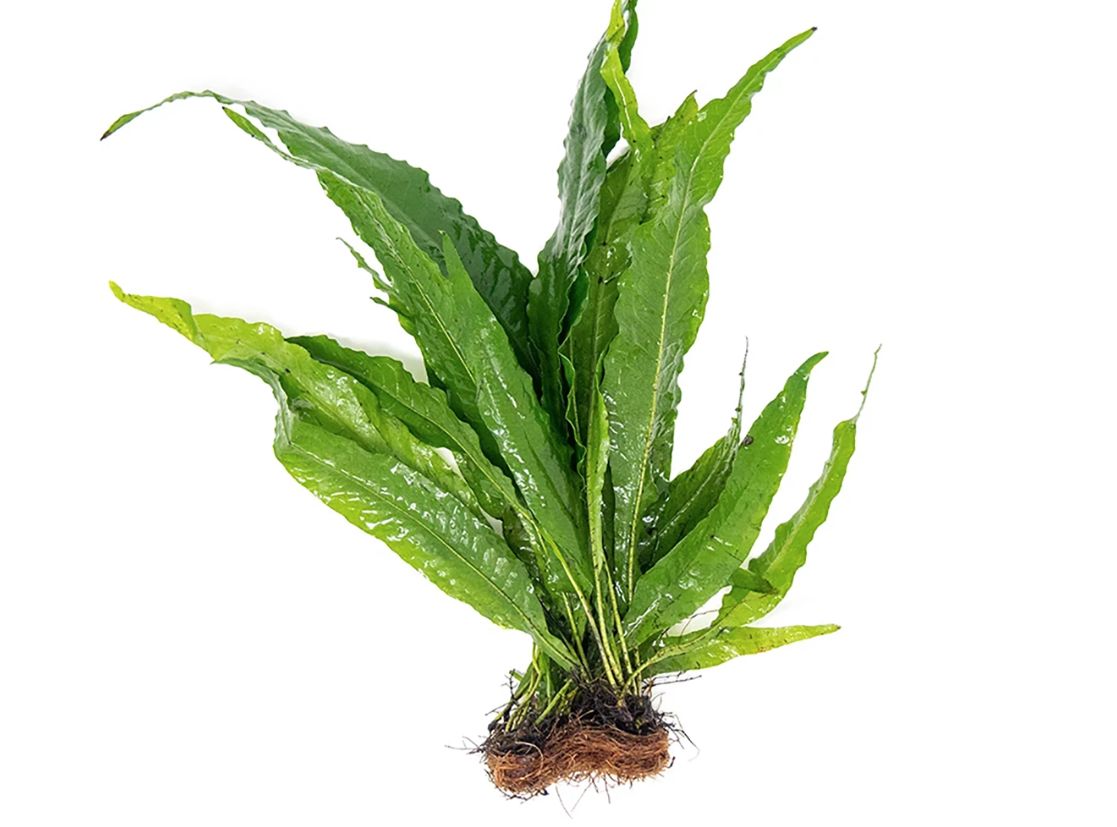
Microsorum pteropus ‘Narrow’
Microsorum pteropus ‘Narrow Leaf’ is a captivating variant of Java fern, celebrated for its uniquely slender and elongated leaf shape. Compared to the broader, lobed leaves of standard Java fern, this variant features significantly narrower leaves that contribute to a graceful and delicate aesthetic.

Microsorum pteropus ‘Trident’
Microsorum pteropus ‘Trident’ is a striking variant of Java fern, notable for its unique triangular leaves with branching tips that resemble the prongs of a trident. The leaves feature multiple lobes, creating an ornamental and eye-catching appearance.
Typically, ‘Trident’ Java fern produces medium to large-sized leaves, with the individual lobes varying in size, resulting in an intricate and textured look.
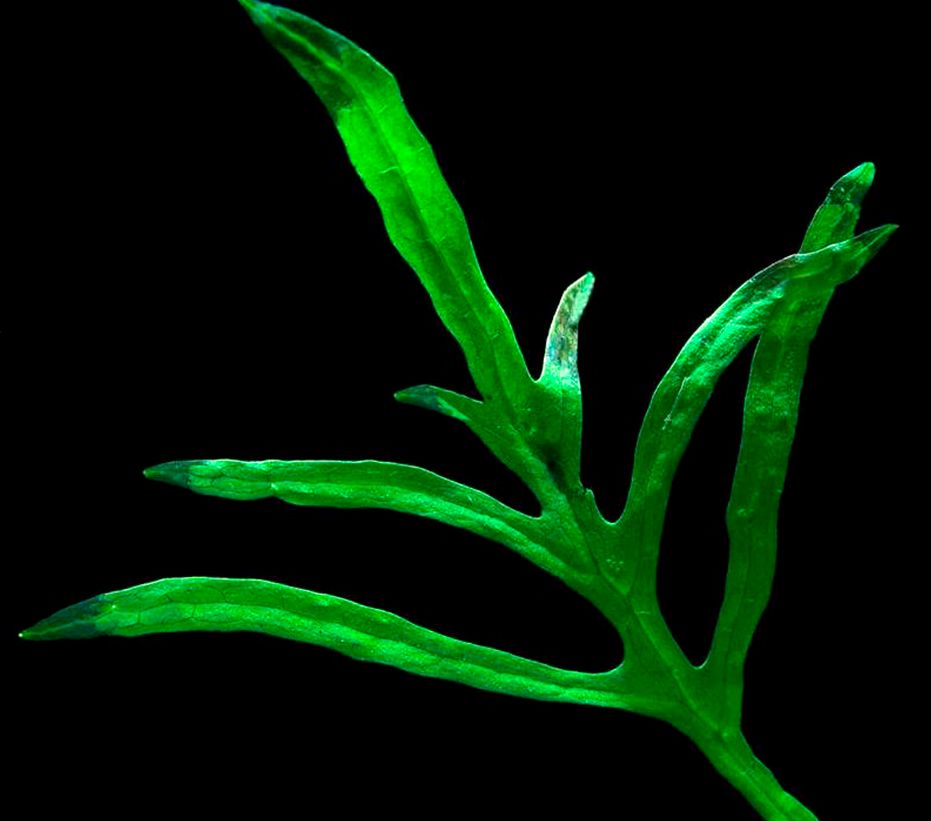
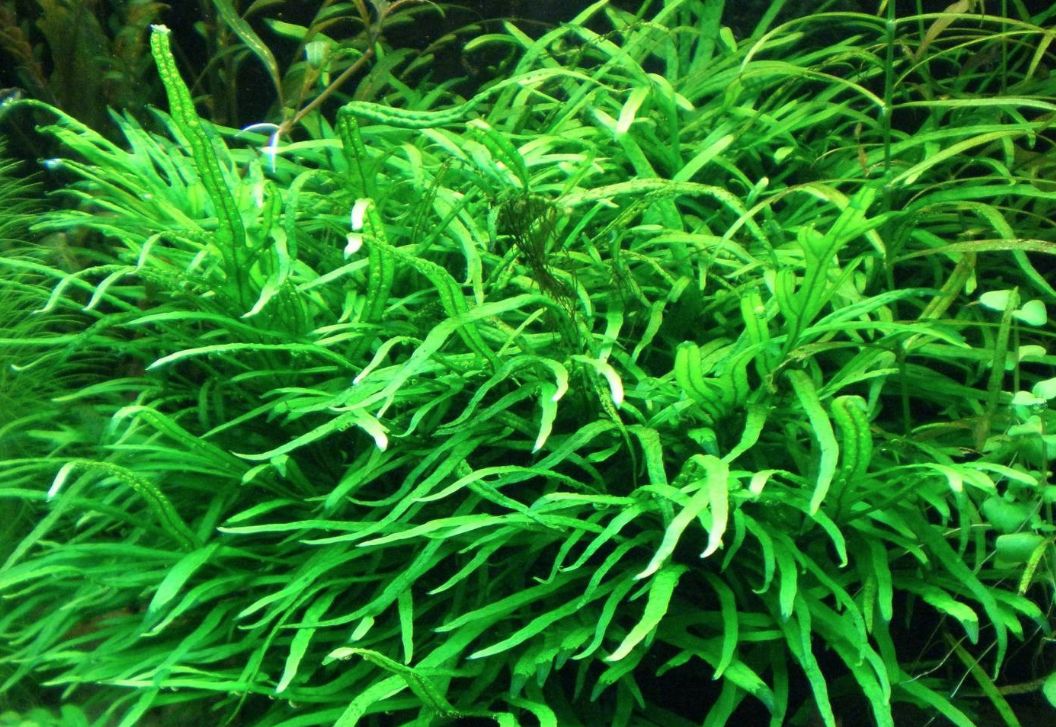
Microsorum pteropus ‘Windeløv’
Microsorum pteropus ‘Windeløv’ is a patented variety named after Holger Windeløv, the founder of Tropica. This striking variant is distinguished by its ruffled, twisted, and deeply lobed leaves, which create an elegant and intricate appearance. The edges of the leaves may exhibit wavy or crinkled patterns, enhancing their unique texture.
Typically, ‘Windeløv’ Java fern features medium to large-sized leaves, with lobes that vary in size, resulting in a visually dynamic display.
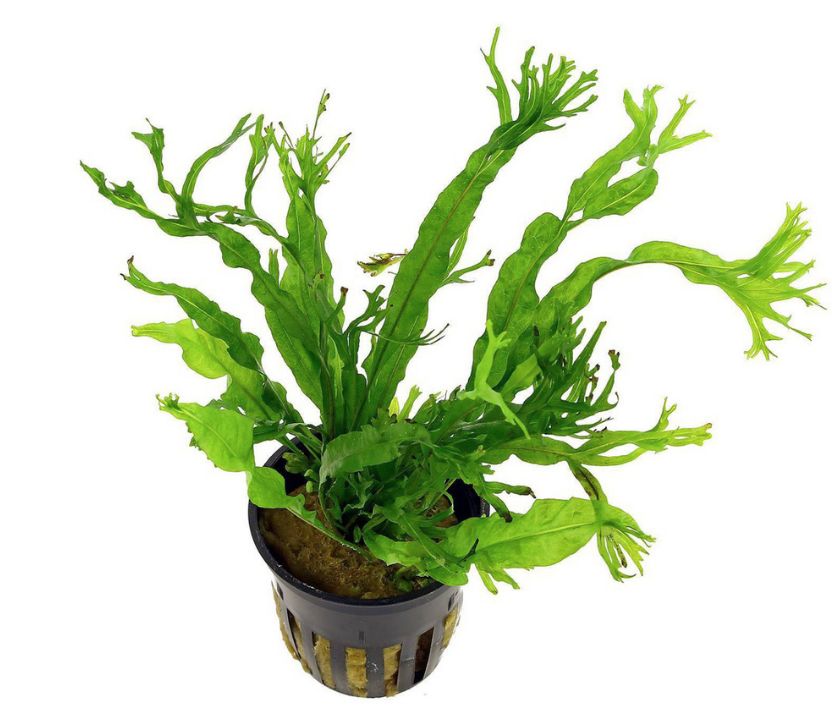
Microsorum pteropus ‘Petite’
Microsorum pteropus ‘Petite,’ also known as Java Fern ‘Petite,’ is a compact variant of the beloved Java fern, ideal for smaller aquariums or those seeking a more delicate aesthetic. The leaves of ‘Petite’ maintain the characteristic broad and lobed shape of standard Java fern but are significantly smaller, giving them a refined and graceful appearance.
This miniature version is perfect for aquascaping, adding lush greenery without overwhelming the tank. Its petite size allows it to fit seamlessly into various setups, making it a great choice for nano aquariums or as an accent plant among larger foliage.
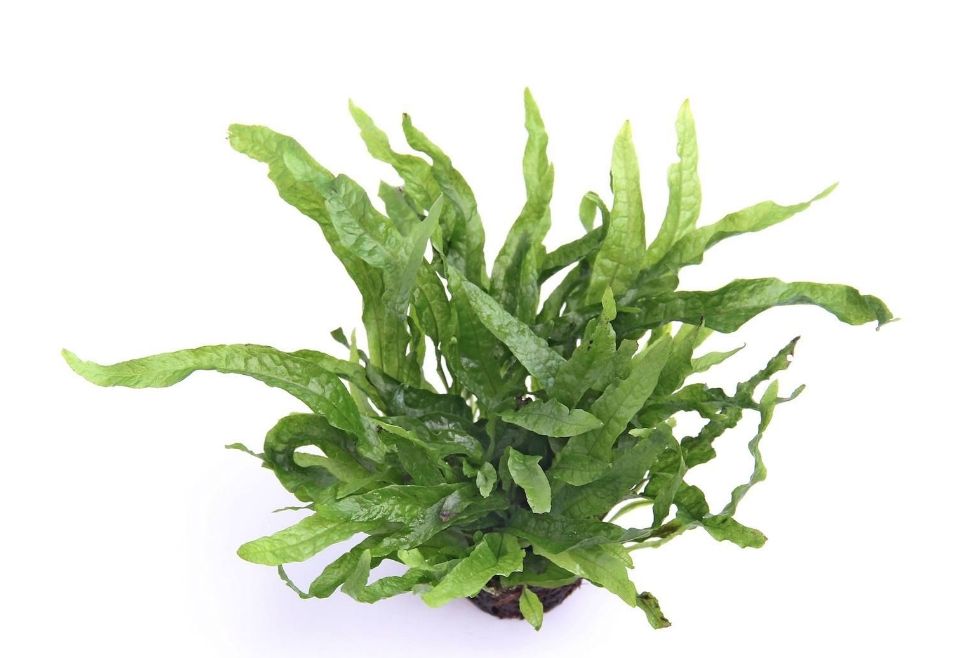
Difficulties in keeping
Java fern species are remarkably easy to care for, making them an excellent choice for both beginners and experienced aquarists. Unlike many other aquatic plants, they do not require substrate to thrive and can grow successfully without CO2 supplementation. Instead of planting them in substrate, you can tie the ferns to stones or driftwood, allowing for flexibility in their placement. Simply attach pieces of the fern to a small stone to increase its weight, enabling easy movement around the tank.
In addition to their care requirements, all Java fern species boast exceptional ornamental qualities. They pair beautifully with driftwood, making them popular for creating natural aquascapes. Their slow growth rate is another advantage; you won’t need to trim or cut them frequently, allowing for a more low-maintenance aquarium.

Care and keeping in the tank
Growth rate
The growth rate of Java fern is generally slow to moderate compared to many other aquatic plants. Understanding this growth rate is essential for aquarium care and planning. Various factors can influence the growth of Java fern, including lighting, nutrient availability, water parameters, and CO2 levels.
The rhizome, a thick horizontal stem from which the leaves and roots emerge, plays a crucial role in the plant’s growth and propagation. As the plant matures, the rhizome can elongate and develop additional branching points, leading to the production of more leaves and plantlets.
Lighting
Java fern is considered a low to moderate light-demanding plant, making it a versatile choice for various aquarium setups. It can thrive in low-light conditions, allowing it to adapt well to environments without intense artificial lighting.
For optimal growth, Java fern benefits from moderate illumination. While it can tolerate some shading for extended periods, prolonged low light will hinder its growth. Natural, scattered light is ideal; however, direct sunlight can lead to excessive algae growth and potentially damage the leaves.
Java fern generally does not require long periods of lighting—an 8 to 10-hour photoperiod each day is typically sufficient for its health and vitality. Establishing a consistent lighting schedule is crucial to ensure the plant receives adequate light without the risk of overexposure.
Water parameters
Java fern thrives in tropical tanks with water temperatures above 24 °C. Even under optimal conditions, its growth remains slow; if the temperature drops below this threshold, growth nearly halts.
Water hardness and pH are crucial for Java fern’s well-being. The plant can adapt to various water hardness levels, flourishing in both soft and moderately hard water. For optimal growth, aim for a water hardness of 2 to 15 dGH (35 to 250 ppm), with soft water (no more than 6° KH) being particularly beneficial. The pH should be neutral to slightly acidic, ideally between 5.5 and 7, which often occurs in established tanks.
Due to these requirements, Java fern does not need frequent water changes, as excessive renewal can hinder its growth rate. In community tanks, a renewal of about 1/6 to 1/5 of the tank volume approximately twice a month is sufficient for maintaining a healthy environment.
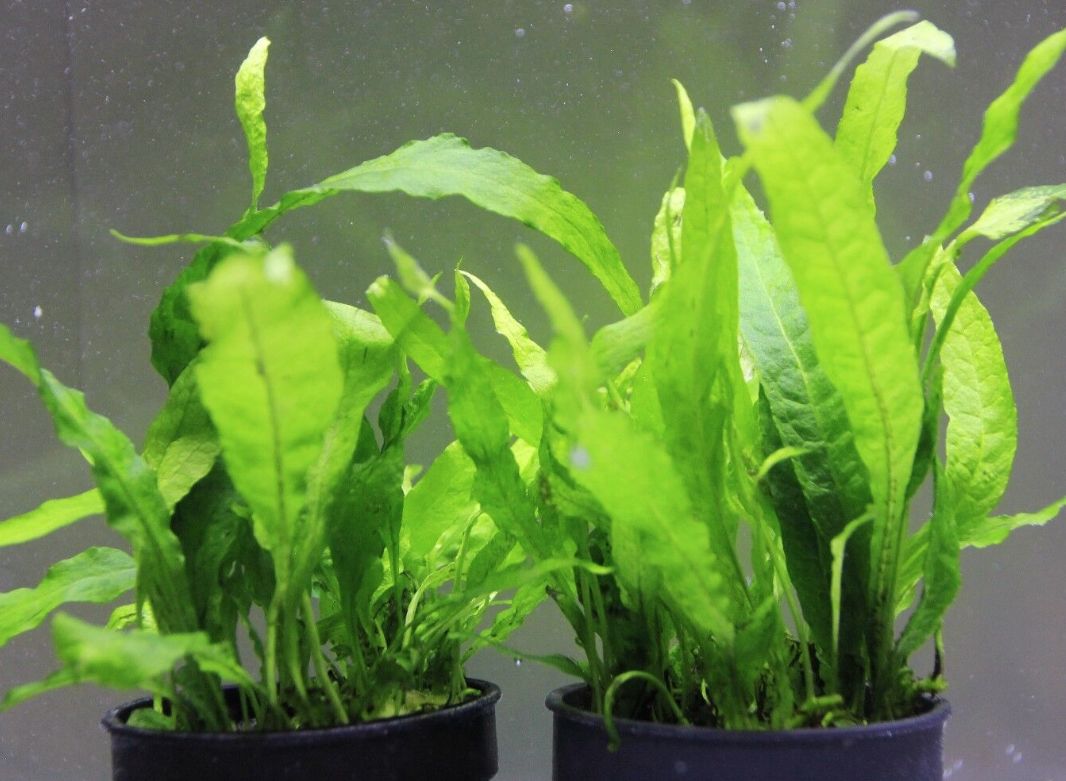
Substrate
Java fern does not require substrate for growth, as it primarily obtains nutrients through its rhizome, which should be kept above the substrate. The rhizome, a thick horizontal stem from which leaves and roots emerge, is usually positioned above the substrate, and the plant’s root system is relatively underdeveloped. Therefore, any accumulated silt at the bottom of the tank is sufficient for its needs, making the size of substrate particles less critical for these plants.
It’s essential to avoid burying the rhizome in the substrate, as doing so can lead to rot and ultimately cause the plant’s demise. Instead, you can attach Java fern to hardscape materials like driftwood or rocks using fishing line. Alternatively, plant it near these structures, allowing the rhizome to rest on top for optimal health and growth.
CO2
Java fern is a slow-growing plant that adapts well to lower levels of carbon dioxide. It can thrive without additional CO2, making it an excellent choice for low-tech or low-light aquariums. In a well-maintained tank, Java fern can utilize the naturally occurring carbon dioxide produced by fish respiration and the breakdown of organic waste, providing sufficient carbon for its growth.
This adaptability allows Java fern to flourish in community tanks where conditions may not always be ideal, making it a favorite among aquarium enthusiasts seeking resilient and low-maintenance plants.
Nutrients
When growing Java fern, regular fertilization is essential. Since these plants lack true roots, they primarily absorb nutrients from the tank water. To help your Java ferns reach their full beauty, remember to add liquid fertilizers after each weekly water change.
Pellet fertilizers placed under the roots are generally ineffective for Java fern, as the plant cannot utilize them due to its weak root system.
Additionally, it’s important to minimize disturbances in the tank, as Java ferns do not tolerate unnecessary agitation or the presence of suspended organic particles in the water. To promote healthy growth, relocate plants and catch fish as infrequently as possible. Strong water flow, intense air blowing, and fish that dig in the substrate can significantly decrease the growth rate of Java fern.
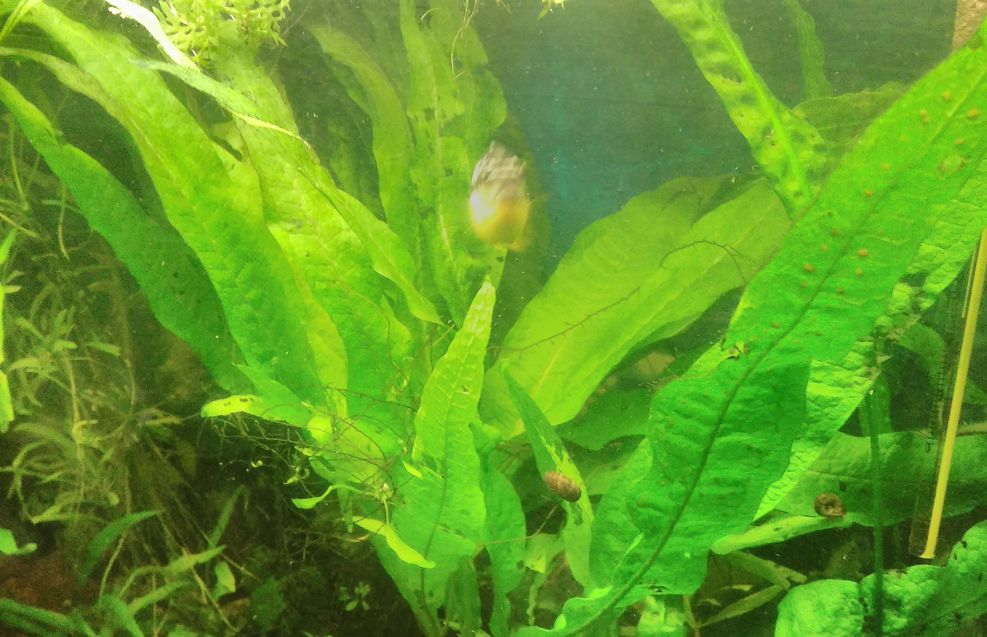
Propagation
In a tank, Java fern reproduces solely through vegetative methods. The rhizome can be divided into several sections, each with two to three leaves, and each section will eventually develop into a new plant. Another form of vegetative reproduction occurs when growth buds appear on old, dying leaves, leading to the formation of new plants.
Once the old leaf completely dies, the new plants detach and float to the water’s surface. Over time, these new plants develop a rootstock, which gradually sinks to the bottom of the tank. This natural propagation method allows Java fern to expand and thrive in the aquarium environment.
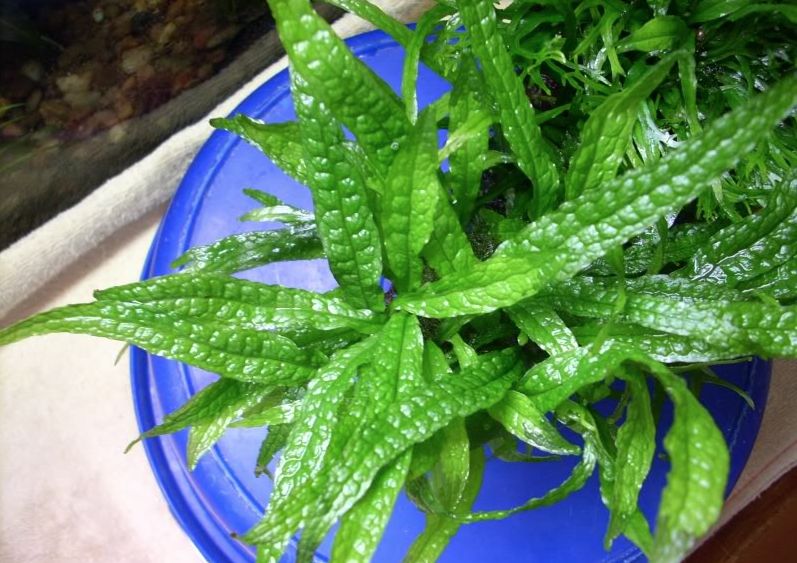
Compatibility with fishes
Java fern is highly compatible with a variety of fish species, as very few are tempted to eat it—even those that typically nibble on other tank plants. This resilience makes it a suitable addition to tanks housing large cichlids and many herbivorous fish.
The coarse texture of Java fern’s leaves deters most fish from consuming it, allowing it to thrive alongside other robust plants like Anubias nana in cichlid tanks. This makes Java fern an excellent choice for creating a diverse and resilient aquarium environment.